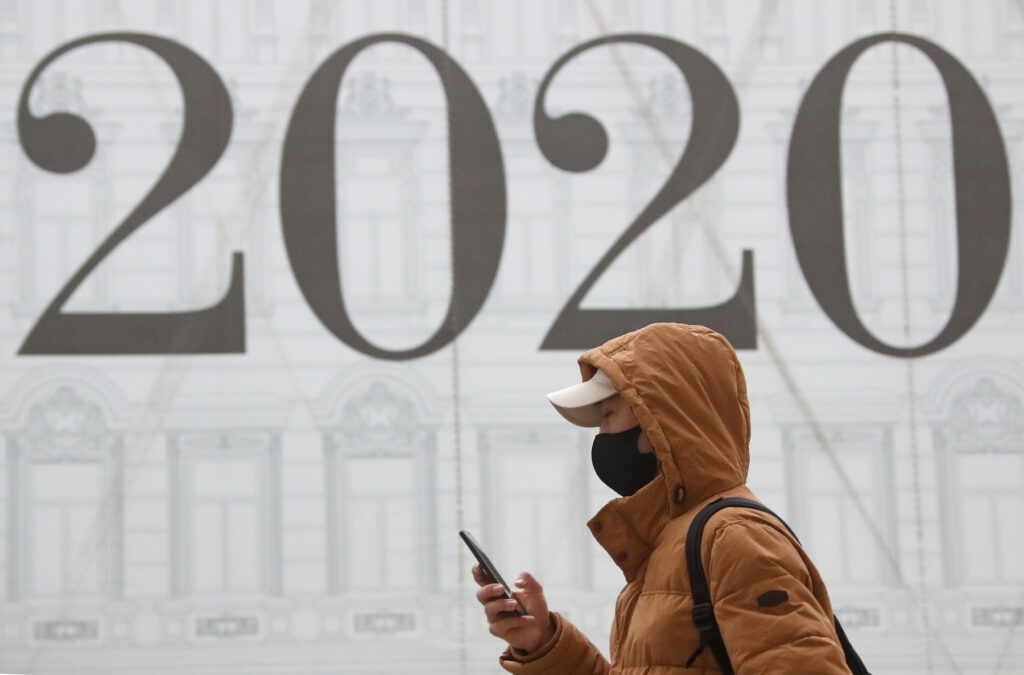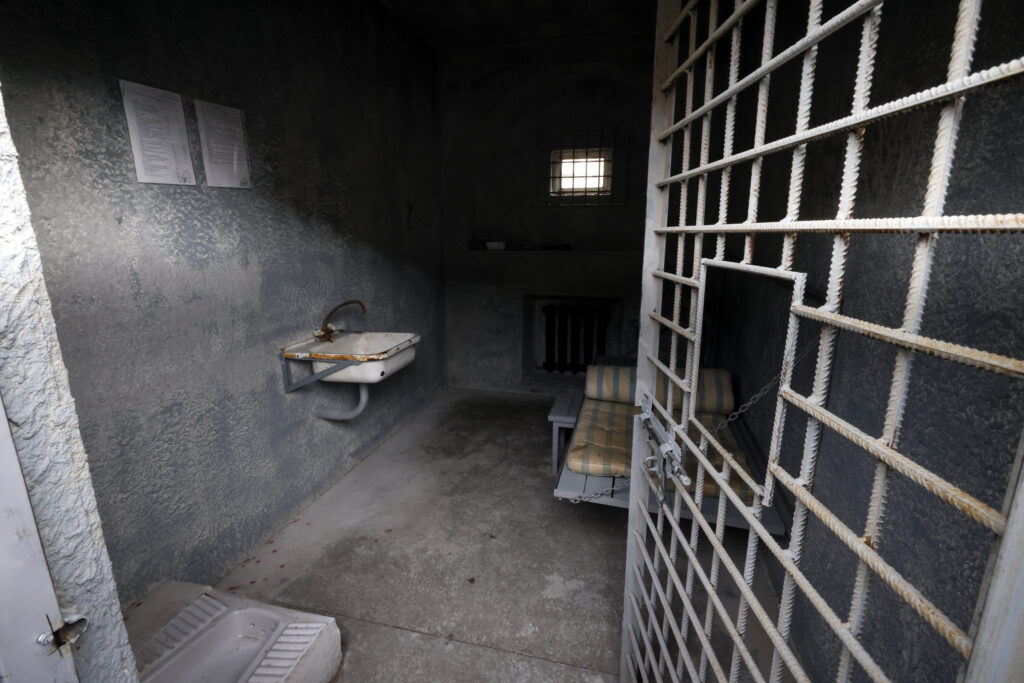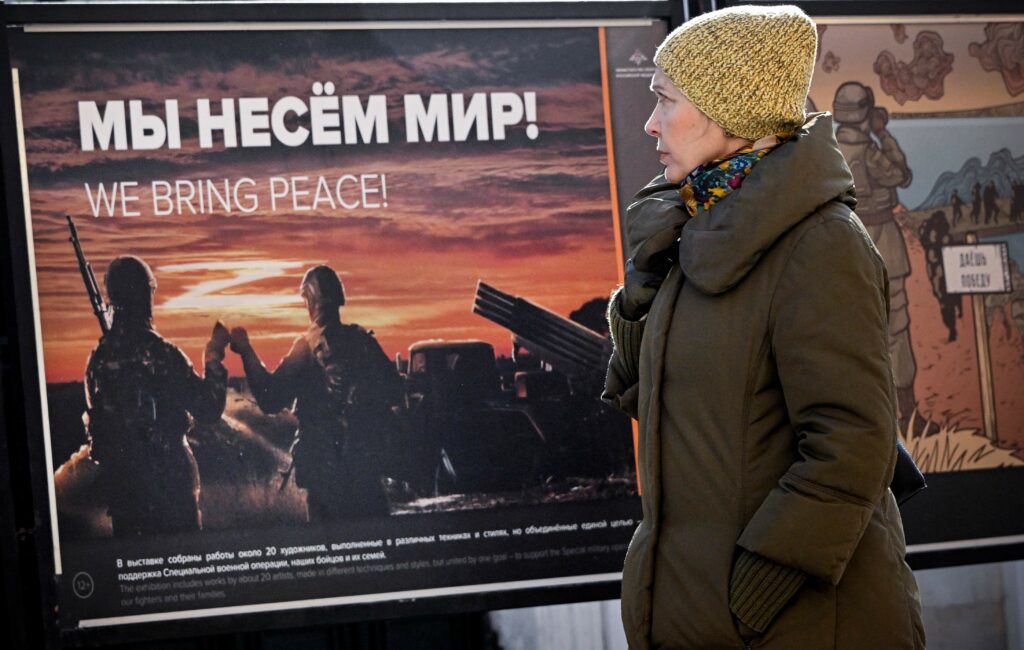The level of social stability in Russia is measured by different ratings: one can ask about the situation in the country or people’s attitudes towards political leaders. This gives a fairly accurate ratio of supporters to opponents, loyalists to oppositionists. However, society’s opinion about the power elite (public support vs. opposition) does not reflect qualitative changes in the relationship between the authorities and society.
The last two decades saw two watersheds: 2008−2009, when the global economic crisis led to long-term ‘stability’ in Russia, and 2014−2018 — the period of escalated confrontation with the West, a depreciated rouble and general austerity. Young Russians disapproved of the distancing from the Western world. Older people were outraged by the pension reform. The years 2008 and 2018 both marked a worsening situation, but their symbolic meaning is different. The economic crisis of the late 2000s set limits on the political regime’s capabilities; a new qualitative leap in living standards was unlikely and, at most, some improvement of conditions was possible. Studies confirm that Russians expect at most that the authorities will ensure a slight improvement of the current situation. This process has two dimensions: a quantitative one (a smaller proportion of Russians expecting improvements) and a qualitative one (more modest expectations).
The landmark events in society in recent years — the pension reform, the coronavirus epidemic, the vote on constitutional amendments — changed not only the balance between those who are for and against the current policy, but also the distance between supporters and opponents. One of the important indicators of social perception of one’s own situation is living standards and assessment of the state’s economic performance. For more than a decade, the Levada Centre has been calculating an aggregate social and economic indicator, the consumer sentiment index. It takes into account the assessment of changes in one’s financial situation, readiness to make big purchases, as well as the perception of the future of one’s family and the country.
In an aggregate form, this indicator showed strong growth from early 2016 to mid-2018, which was then ended by the pension reform and coronavirus epidemic. The September 2020 figures show a slight rebound, the result of the lifting of restrictions and resumption of ‘normal’ life.
Assessment of the current situation and expectations
Among the ‘optimists’ who believe ‘things are looking up’, the gap between expectations and the assessment of the current financial situation remains stable (the two curves move practically in parallel to each other). At the same time, expectations are consistently above the assessment of the current situation. This may be naive optimism. In fact, though, this difference represents a credit of public trust in the authorities. The higher the expectations, the more they offset the current discontent. People believe they can compensate for existing hardships with big gains in the future. However, when the gap is small or the assessment of the current state of affairs exceeds expectations for the future, citizens’ loyalty to unpopular actions by the authorities is lower. This translates into a higher probability of domestic instability.
In 2012−2014, the optimists’ and pessimists’ indices almost converged. That could be a lack of high confidence in future government actions. Indeed, this was a period of mass protests and the lowest confidence rating of government institutions. Low expectations and the lack of positive changes generate fatigue and desire for change. For instance, the surge in expectations in early 2015 when the feeling of a looming (literal) war with the West disappeared. For the first time in years, there were no significant exchange rate fluctuations. Western sanctions did not result in a dramatic deterioration of living standards. In general, this bolstered citizens’ confidence in their own financial well-being. Plus, this period had an important symbolic meaning. The geopolitical confrontation marked a change in the state’s priorities: the national became more important than the personal.
The indices ‘Assessment of the current financial situation’ and ‘Assessment of the future of my family and the country’ by category (‘things are looking up’ and ‘the country is on the wrong track’). The index is calculated as the ratio between positive and negative responses + 100.


It is noteworthy that the number of optimists increased from 41% to 60% over three months in early 2014. Such a noticeable quantitative shift can be explained by how the conflict with Ukraine formed a new basis for social solidarity and changed the nature of expectations. Russians expected a strengthening of the geopolitical position, which was expected to be converted into economic growth. The pattern of the indices reflects this.
In 2009−2015, the pattern of indices of current developments versus expectations was almost identical in the groups of optimists and pessimists, although the values were obviously different. Pessimists were much more responsive to the period of currency instability in 2015. In mid-2018, expectations among pessimists coincided almost exactly with the current assessment of the situation, which chronologically corresponds to the development of pension reform plans, although the trend towards convergence was already observed in 2017, which can probably be considered the year of the end of the ‘post-Crimean’ consensus in society.
Divided society
The political crisis of the late Medvedev era affected all society, albeit to varying degrees (pessimists’ indices differed from those of optimists). The disappointment with the current crisis is experienced by only part of society. The subjective perception of the current financial situation continued to improve in the long run. It is important to bear in mind that subjective assessments are relative. Although there was no significant increase in population incomes over the period under review, the rate of the decrease in incomes was smaller in 2017 than in 2015−2016, and was followed by a slight increase in 2018−2019. Significant changes in the financial services market (e.g. increased consumer lending that made purchases more affordable) and direct payments to certain segments of the population may have created a sense of growing prosperity.
Real incomes of the population across federal units of the Russian Federation, in % year-on-year

Source: Rosstat
Russians’ expectations for the future of the country and that of their respective families were linked in public opinion until mid-2018. Traditionally, optimists had slightly higher expectations for the country’s future compared to their own prospects. When it comes to pessimists, the trends diverged; starting in autumn 2018, they expected the country’s future to be less prosperous than their own.
The differences in data reflect opposite underlying attitudes. Optimists are more likely to rely on the state, and they more often hope that their problems will be solved. Believing that the country is on the right track, they expect an overall improvement in people’s quality of life that will positively impact their families. Pessimists, on the contrary, tend to rely only on themselves and do not expect help from the state. At the same time, satisfaction with existing living conditions may continue to improve. However, against this backdrop, the lack of a positive outlook will be even more annoying. Interestingly, the pessimistic attitude became more pronounced at a time when the inevitability of the pension reform became evident and the ‘Crimean consensus’ lost its prominence in public opinion. Different demographic profiles correspond to these differences.
The most striking difference is between age groups. Starting in 2018, Russians aged 25−39 have been increasingly dissatisfied with what is happening. The overall growth in the number of those who believe that the country is on the wrong track is typical of this age group. This means the increase in the number of dissatisfied respondents is due to the discontent of respondents aged 18−24 and 25−39. Financial well-being does not differentiate between supporters and opponents of the country’s current policy course; the proportion of those who can barely afford food has changed simultaneously within the groups of satisfied and dissatisfied respondents over the past years. Geography and educational differences do not explain the increase in the number of dissatisfied people in recent years, either.
Age profile of respondents who believe that things are going in the wrong direction (in % for the period)

Young Russians are increasingly dissatisfied with the country’s policy, which translates into their attitude towards the country’s leader. In January 2020, 68% of Russians approved of the president’s job performance. In April and May, this figure fell to 59%, remaining at this level until August, when it rose again to the ‘pre-COVID’ level. The approval rating of other key institutions has also been restored. The open question about the most credible policies confirms this trend. During the period of worse ratings, the opinion of young people under 25 was most volatile. The approval and trust indicators in this demographic group were the lowest.
In general, do you approve or disapprove of Vladimir Putin’s performance as President of Russia? (%)

The range of fluctuations among the more mature age groups (55 and older) is much smaller. The level of trust in Putin here is much higher; these groups form the core of the President’s support base. Fluctuations of young people’s attitudes towards the country’s leader indicate the lack of consistent assessment of his activities. The recent epidemic-related crisis has only further undermined confidence in a better future. The expanding list of grievances makes each new blow to stability more dangerous for the authorities.
Recent years have divided Russian society. People who are satisfied with developments in the country continue to hope for a better future, while those who see them in a more negative light do not have high expectations. The previous crisis of public trust in the power elite (2011−2013) affected the entire society, which is what differentiates it from the present moment. For most of the current government’s time in power, its popularity was almost evenly distributed across all population groups, and therefore populist methods addressing the majority were effective. Today we are beginning to notice important demographic differences when it comes to thinking about the future. These changes are largely due to the ‘rejuvenation’ of the group of dissatisfied respondents. The social frame of ‘the youth’ is expanding to include not only the youngest Russians but also respondents over thirty. This shows that the authorities are unable to communicate effectively with younger age groups. Younger Russians are increasingly disappointed with the country’s future — and their own.









